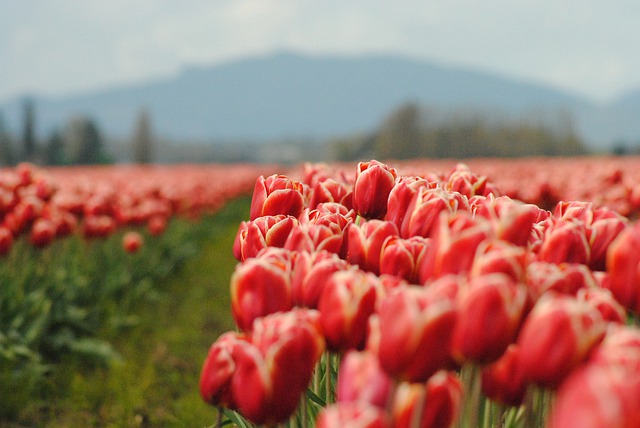
When you take time to apply proper organic horticulture techniques and products, it can really produce some great results. It lets other know that you are serious about the environment as well as the health of your plants. However, there are always ways to learn new skills, and improve your skills.The following advice will help you with this.
Use climbers if you want to cover any fences or walls. Plants that grow as climbers are quite versatile, helping you hide ugly walls or fences, many times within only one season of growth. No need to worry if a bush or tree is in the way, as climbers can grow through them. Also, they can match the shape of an arbor. Some need to be tied to a support, whereas certain climbers attach themselves to a surface with tendrils or twining stems. Trusted variations of climbers are honeysuckle, jasmine, clematis, wisteria and climbing roses.
Brighten up your garden with biennials and biennials. You can also use these flowers to fill any spaces between shrubs and perennials when they are in the sun.Some plants to get you started include petunia, marigold, sunflower, cosmos, petunia and marigold.
You don’t need a costly chemical treatments for plant mildew.Mix a bit of liquid soap and baking soda into water. Spray this mix on your plants every week until the mildew should go away. This method is not going to cause any damages to your plants and gently treats mildew slowly but efficiently.
Keep the weeds out of your garden by removing them regularly. Weeds can kill a precious garden. You might want to think about using white vinegar to do this. White vinegar is a fantastic weed killer! If you’re annoyed with pulling up weeds manually, douse them with a white vinegar solution.
Climbing Roses
Use climbing vines or plants to cover walls and fences. Many climbers are so robust that they can cover the wall or fence in a single growing season. They can be trained to grow over an arbor, or even cover an arbor. Some need to be tied to a support, while other varieties need to be held up by tying them in place. Some dependable types include honeysuckle, jasmine, jasmine, climbing roses, and climbing roses.
For areas with high alkaline, mix coffee grounds into the soil. This is a simple way to replenish your soil with acid. Improving the pH of your soil will make your vegetables and greens taste even better!
When you’re out and about in the garden, beware of stink bugs and other insects, keep an eye on those stink bugs. Stink bugs enjoy gardens, and are especially fond of fruit, and pepper plants, beans and peppers. If you do not keep them under control, they can decimate your garden, so make plans for how to protect your plants from these pests.
When autumn has arrived, you must prepare to plant your favorite fall veggies and other edibles. A hollowed out pumpkin can become a planting container instead of clay pots. Once you cut an opening at the top of the pumpkin and scoop out the insides, spray the edges and inside with Wilt-Pruf to prevent rotting.
Deciduous shrubs should be protected from the elements. Any potted shrubs should be sheltered in the winter from cold weather. Tie the canes together, and drape a sheet or blanket over the top of the wigwam. In contrast to wrapping the plant with plastic, this method promotes air circulation, which stops the plant from rotting.
If your horticulture plans include pea plantings, start them inside rather then planting them outdoors. The seeds will have a better in your home if planted there first. The seedlings tend to be healthier, giving them a better chance to grow into a healthy adult plant capable of rebuffing diseases. You can transplant the seedlings outside after they become better established.
Purchase an inexpensive gardening kneeling pad, and a kneeling stool to use in your garden.Spending lots of time close to the ground while working tends to be hard on your knees, so a lightweight and portable garden stool will make horticulture more comfortable. Gardening involves moving heavy objects and dirt, so purchasing a wheelbarrow can be a very smart investment.
To help young plants, try pouring boiling water on top of nearby weeds. Boiling water is a very safe alternative to other potent herbicides. Pour hot water right on the weeds, but do not get any on your plants. The roots of the weeds are damaged by the boiling water which, in turn, inhibits further growth.
Use common sense when watering the garden. Use a soaker hose to save time so that you do not have to water each plant individually with a hose nozzle, so the garden can get watered while you are doing other tasks. Keep water pressure on your hose low so it doesn’t spray up onto the plants’ leaves. Let your soaker hose run for a while as you do other things.
Organic Garden
Be consistent with garden fertilization. Manure is great in enabling plants to grow, although it’s vital to use commercially composted products in order to lessen the risk of a variety of pathogens. There are a wide variety of fertilizing options available, although which type you use is not that important; just make sure to use something.
You now have the skills, the tools, and the equipment necessary to apply these strategies to your own organic garden. Good for you! The advice in this article was compiled to contribute to your overall knowledge of organic horticulture. There is always something new to learn. Hopefully you have found at least one new strategy to utilize in your organic garden.